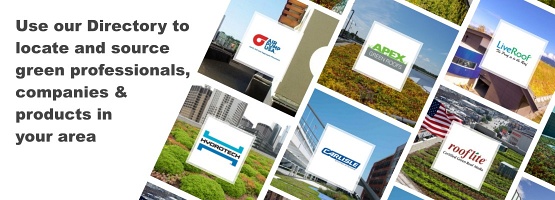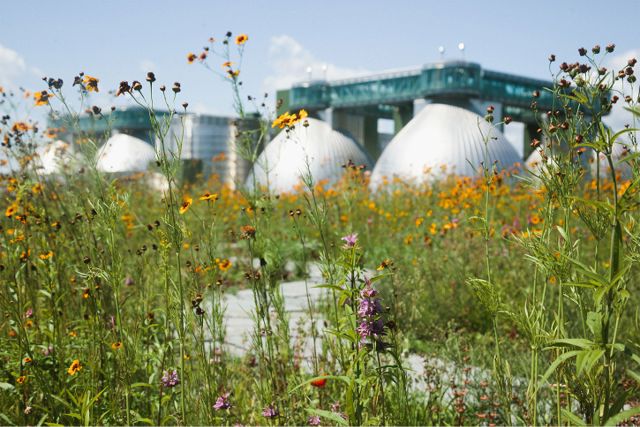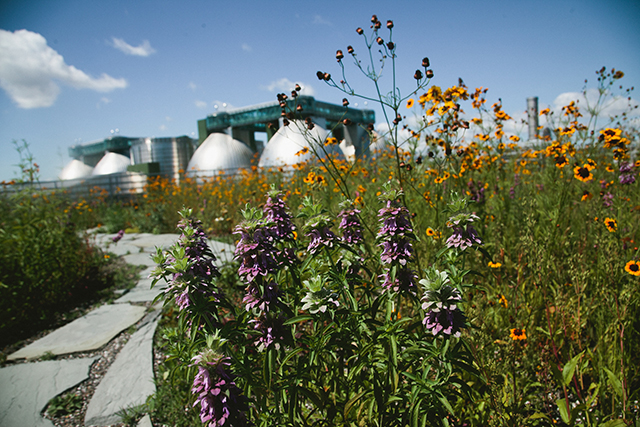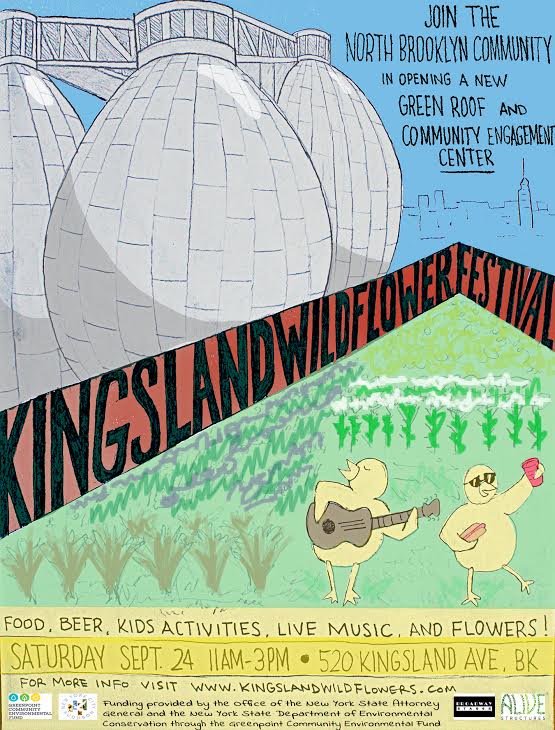Lauren Dalban of Inside Climate News writes:
Green infrastructure mitigates the impacts of stormwater on New York City’s sewer systems, limiting the flow of sewage to local waterways.
Every Friday afternoon, the Kingsland Wildflower Green Roof opens its doors to the local community. Tall grass and brightly-colored flowers greet visitors after their four-floor trek to the top of the building—a green oasis in Brooklyn, surrounded on all sides by heavy industrial activity.
Just across the street, the Newtown Creek Wastewater Treatment Plant’s gargantuan “digester eggs” treat millions of gallons of sewage every day.
Despite the visual incongruity of this scene, both the garden and the treatment plant work to stop contaminated water from flowing into the city’s waterways during heavy rainfall.
The rooftop garden sits on a building on Kingsland Avenue owned by the production company Broadway Stages. Two well-tended sections contain a variety of plants and flowers native to the area, like strawberries and camassias. A garden on a lower roof is made up largely of sedum, a small succulent-type plant.
“I think that green roofs are really a win for everyone,” said Dustin Partridge, director of the Green Roof Researchers Alliance and of conservation and science at the NYC Bird Alliance. “They’re so important for a climate-impacted future–they help people, they help the city, and they help wildlife. It’s amazing what can happen when you install a green roof on a building in New York City. We have now, probably over 80 bird species observed on green roofs throughout the city, and thousands of insects.”
Read more: Keeping Stormwater at Bay: a Brooklyn Green Roof Offers a Look at a Climate Resilient Future
 Greenroofs.comConnecting the Planet + Living Architecture
Greenroofs.comConnecting the Planet + Living Architecture










